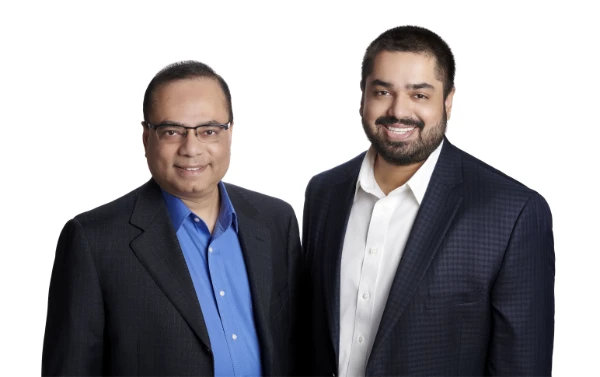(Part of the IFA Master Curriculum)
Key Question for Accountants
How can you guide a business owner client through the complex challenge of estate equalization, moving beyond traditional funding methods to a more capital-efficient strategy that unlocks powerful tax advantages?
- The Equalization Dilemma: For high-net-worth clients, indivisible assets like a business or farm create a roadblock to fair estate distribution. While permanent life insurance is the preeminent tool for creating the necessary liquidity , the significant annual premiums can divert corporate funds from other ventures.
- A Capital-Efficient Solution: An Immediate Financing Arrangement (IFA) allows a corporation to pay the insurance premium and immediately borrow back the funds, using the policy’s cash value as collateral. This transforms a large capital outlay into a manageable interest expense, allowing capital to remain liquid for reinvestment into business operations.
- The IFA-Enhanced CDA: Structuring the strategy corporately unlocks its most powerful benefit: an enhanced Capital Dividend Account (CDA). The CDA credit is calculated on the gross death benefit before the IFA loan is repaid, creating a surplus balance that allows the corporation to distribute potentially millions in retained earnings to shareholders, tax-free.
For your high-net-worth clients, succession planning often presents a complex challenge: a key family asset—whether a business, a farm, or a cherished family cottage—represents both a legacy and a major roadblock to fair estate distribution. How can a client pass an indivisible asset to the child who can best manage it, while ensuring an equal inheritance value for other children, without forcing a sale?
The answer is estate equalization. While typically funded by permanent life insurance, the capital commitment required for premiums can divert significant personal or corporate funds from other ventures, leaving clients in a suboptimal position. This is where you can add significant value by introducing a more capital-efficient solution: the Immediate Financing Arrangement (IFA). Understanding this strategy allows you to move beyond traditional compliance and provide high-value, proactive advice that solidifies your role as a key strategic partner for your most important clients. This article will explain how an IFA works for both personal and corporate asset equalization, with a focus on the significant tax advantages of the corporate structure.
Page Contents
- 1 The Succession Dilemma: Equal vs. Fair Distribution
- 2 Why Life Insurance is the Essential Tool for Equalization
- 3 The IFA Solution: A Capital-Efficient Funding Mechanism
- 4 The Corporate IFA: Funding the Plan Without Draining Capital
- 5 Comparing Alternatives: Why the IFA Is Often the Optimal Choice
- 6 Due Diligence: Client Suitability and Your Role
The Succession Dilemma: Equal vs. Fair Distribution
Consider a client with a significant illiquid asset, like an operating company where only one of the children works, or a family cottage used primarily by the one child who lives nearby. Your client’s goal is to treat all children fairly, but the options are problematic:
- Forced Co-ownership: Dividing the shares or title equally forces a partnership on heirs with divergent interests, lifestyles, and financial situations, risking the asset’s stability and family harmony.
- Unequal Distribution: Leaving the asset to one child and splitting the remaining estate can create a significant value gap and potential family conflict.
- Forced Sale: Liquidating the legacy asset to divide the cash satisfies monetary equality but destroys the client’s life’s work or a cherished family legacy.
The optimal solution is a fair distribution: the successor inherits the indivisible asset intact, while the other heirs receive assets of equivalent value. This requires substantial liquidity, which is where life insurance becomes essential.
Why Life Insurance is the Essential Tool for Equalization
Life insurance is the preeminent tool for creating the liquidity needed to achieve estate equalization. It provides a contractually guaranteed, tax-free death benefit that can be used to provide monetary compensation to heirs who are not inheriting the primary illiquid asset. This infusion of cash serves multiple critical functions:
- Facilitates equitable distribution by providing the funds to balance the asset ledger.
- Prevents the forced sale of assets by providing cash to pay out heirs and cover estate tax liabilities.
- Promotes family harmony with a clear, fair, and pre-funded solution.
The challenge, however, is that a multi-million-dollar permanent life insurance policy requires a significant annual capital commitment for premiums, creating the funding problem that the IFA is designed to solve.
The IFA Solution: A Capital-Efficient Funding Mechanism
An Immediate Financing Arrangement (IFA) is a financing strategy that allows a policyowner to pay the annual insurance premium and then immediately borrow back the same amount from a third-party lender, using the policy’s cash surrender value as collateral. This has the effect of significantly reducing the annual cash flow required to maintain the policy.
This mechanic transforms a large capital outlay into a manageable, ongoing interest expense. When the borrowed funds are invested to earn income from an investment or property, as detailed in our Accountant’s Companion to Interest Deductibility, the loan interest may be tax-deductible. Furthermore, a portion of the insurance premium (the Net Cost of Pure Insurance) may also be deductible under the collateral insurance rules. This combination can substantially reduce the after-tax cost of funding the plan.
The IFA can be implemented through personal or corporate ownership, but the corporate structure offers superior tax efficiency.
Personal Ownership: The Cottage Example
A client can personally purchase a life insurance policy equivalent to the cottage’s value. Through an IFA, the client:
- Pays the annual premium from their own unborrowed funds.
- Immediately borrows back the premium amount via the collateral loan.
- Reinvests the borrowed funds into an income-producing investment portfolio.
Upon the client’s death, the tax-free death benefit repays the loan, and the remaining proceeds provide the cash for equalization.
Corporate Ownership: The Optimal Structure for Tax Efficiency
Structuring the IFA within a corporation is the more common and tax-efficient approach for business owner clients. The remainder of this article will focus on this corporate structure.
The Corporate IFA: Funding the Plan Without Draining Capital
For a corporation, the IFA allows capital that would have been locked inside the policy to remain liquid and available for reinvestment. Instead of a large annual capital outlay, the primary cash flow impact is the ongoing, after-tax interest payment on the loan.
How the Integrated Corporate Strategy Works

The IFA-funded equalization plan operates in two phases:
- During Your Client’s Lifetime: Each year, the corporation pays the insurance premium. It immediately borrows back the funds, and that capital is redeployed into business operations or an investment portfolio, restoring the company’s capital position.
- At Estate Settlement: Upon your client’s death, the settlement process begins. The insurer pays out the tax-free death benefit to the corporation. The lender is repaid the outstanding loan balance directly from these proceeds. The remaining death benefit provides the tax-free cash the corporation needs to pay out to the non-business heirs, achieving equalization.
The IFA-Enhanced CDA: Amplifying Value with the Capital Dividend Account

Structuring this strategy within a corporation unlocks its most powerful benefit: the IFA-Enhanced Capital Dividend Account (CDA). The CDA credit is calculated based on the gross death benefit received, before the IFA loan is repaid.
For example, assume a policy has a $3 million gross death benefit, an Adjusted Cost Basis (ACB) of $100,000, and an outstanding IFA loan of $2 million.
- The corporation receives the $3 million death benefit.
- A CDA credit of $2.9 million is created ($3M Death Benefit – $0.1M ACB).
- The corporation uses $2 million of the cash to repay the loan, leaving it with $1 million in cash.
- The corporation can pay the $1 million cash to the heirs as a tax-free capital dividend.
This leaves a “surplus” CDA balance of $1.9 million ($2.9M credit – $1M paid out). This surplus capacity allows the corporation to distribute an additional $1.9 million of its other retained earnings to shareholders, also tax-free.
Comparing Alternatives: Why the IFA Is Often the Optimal Choice
When advising a client on estate equalization, several alternatives to an IFA might be considered. However, each comes with significant drawbacks:
- Using a Promissory Note: The child inheriting the business could sign a promissory note to their siblings, promising to pay them out over time from future business profits. The Problem: This saddles an heir with debt, puts the non-business heirs at the mercy of the company’s future performance, and can create enormous family friction if the business struggles.
- Funding with a Shareholder Agreement: While essential for business partners, a standard buy-sell agreement doesn’t solve the equalization issue among heirs with differing involvement in the business.
The IFA-funded strategy avoids these issues by using an external, tax-efficient vehicle to create the necessary liquidity at death, preserving both business capital and family harmony.
Due Diligence: Client Suitability and Your Role
An IFA is a sophisticated strategy that is only suitable for a select group of clients. As their trusted advisor, your role is critical in assessing fit and ensuring proper execution.
The Ideal Client Profile
- Substantial Reason for Insurance: The need for estate equalization demonstrates a clear reason for a significant permanent life insurance policy.
- Strong, Stable Cash Flow: The client must have sufficient and predictable cash flow to comfortably service the monthly interest payments on the loan balance.
- High Taxable Income: To fully benefit from potential deductions, the client should have sufficient taxable income at high marginal rates.
- Long-Term Perspective: The client must have the right temperament for a long-term leveraged strategy and be able to stay the course through market and interest rate cycles.
Red Flags: When an IFA Might Not Be the Right Fit
- Volatile Cash Flow: If the client’s corporate or personal cash flow is unpredictable, servicing the ongoing interest payments could become a burden.
- Client is Debt-Averse: The strategy is fundamentally based on leverage. If a client is philosophically uncomfortable with long-term debt, it’s not a suitable fit, regardless of the financial benefits.
- Short Time Horizon: The benefits of an IFA compound over decades. It is not designed to be a short-term strategy.
The Accountant’s Role in Implementation
Your involvement is key to the strategy’s success and tax compliance. As detailed in our post on The Accountant’s Role on the IFA Core Advisory Team, your key responsibilities include:
- Ensuring proper fund tracing to maintain interest deductibility.
- Advising on tax compliance and documentation requirements.
- Reviewing annual statements to monitor performance against projections.
Key Risks to Consider
A balanced assessment includes acknowledging the primary risks, such as interest rate fluctuations, policy performance variability, and changes to lender terms. A core part of the implementation process involves stress-testing the strategy to ensure it remains viable even under adverse conditions.
The next step is to model this strategy with specific client numbers. We can work with you to prepare a comprehensive illustration that stress-tests the assumptions and clearly outlines the long-term tax implications, providing you with the data needed for a thorough client review.
Book a call at your convenience to begin the conversation.





